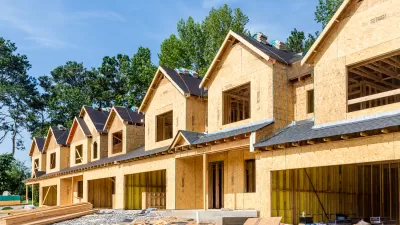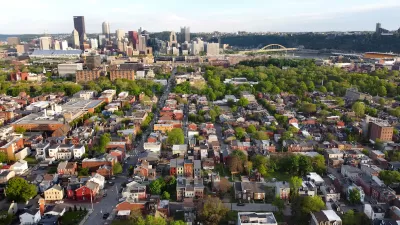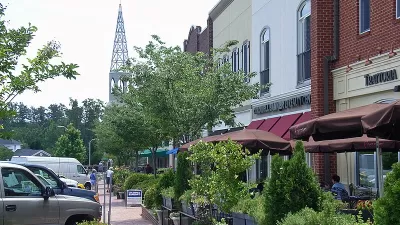In his fifth entry in a lengthy examination of the successes and failures of New Urbanism, Peter Katz looks at one of the movement's key blindspots: the failure to help improve the processes and practices of local governments.

"Although it’s easy to criticize local government staffers for the sprawling patterns that continue to predominate in the suburbs, as I did in the prior installment, and have in earlier writings—there’s plenty of blame to go around," says Katz. "If one is looking for a villain, I might point also to the leadership of the New Urbanism movement for its failure (with some notable recent exceptions) to engage local government on its own terms."
"Unfortunately, it’s a blind spot that’s every bit as pernicious as the one I described in the prior installment that exists among local government planners. It may even be more so, because as new urbanists, we possess the understanding and skills to address, and possibly solve, many of the chronic planning problems that local governments struggle with on a daily basis."
"Twenty years into this endeavor, I’m coming to realize that New Urbanism (and its cousin Smart Growth) really needs its own policy framework if the larger ambitions of these interrelated movements are to be realized," Katz asserts. "It will be tedious and difficult work, but it has to happen if the New Urbanism is to be more than a minor footnote in a mostly sprawl-bound future; It will also require the engagement of people with both the knowledge of the current local government system (and its 88,000 different municipal variants around the nation) and that of current New Urbanism practice."
FULL STORY: Planning in local government: New Urbanism’s blind spot

Pennsylvania Mall Conversion Bill Passes House
If passed, the bill would promote the adaptive reuse of defunct commercial buildings.

Planning for Accessibility: Proximity is More Important than Mobility
Accessibility-based planning minimizes the distance that people must travel to reach desired services and activities. Measured this way, increased density can provide more total benefits than increased speeds.

Fair Housing Cannot Take a Back Seat to ‘Build, Baby, Build’
If we overlook fair housing principles in the plan to build US housing back better, we risk ending up right back where we started.

LA Metro Board Approves New 710 Freeway Plan
The newest plan for the 710 corridor claims it will not displace any residents.

Austin’s Proposed EV Charging Rules Regulate Station Locations, Size
City planners say the new rules would ensure an efficient distribution of charging infrastructure across the city and prevent an overconcentration in residential areas.

Making California State Parks More Climate-Resilient
A recently released report offers recommendations for keeping state parks healthy and robust, including acquiring additional land for conservation and recreation.
City of Costa Mesa
Licking County
Barrett Planning Group LLC
HUD's Office of Policy Development and Research
Mpact Transit + Community
HUD's Office of Policy Development and Research
Tufts University, Department of Urban and Environmental Policy & Planning
City of Universal City TX
ULI Northwest Arkansas
Urban Design for Planners 1: Software Tools
This six-course series explores essential urban design concepts using open source software and equips planners with the tools they need to participate fully in the urban design process.
Planning for Universal Design
Learn the tools for implementing Universal Design in planning regulations.


























